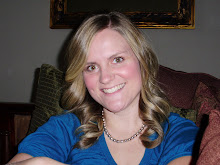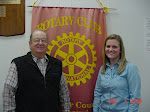



Last weekend, my schedule was booked with all kinds of activities! I certainly didn't leave any time for studying, but you can bet that I'll be paying for that come this weekend. On Friday, some of my friends and I booked a tour of the Soweto township, a sprawling section of Johannesburg that is home to over a million people. Soweto was organized under apartheid as a "black" section of town, making it one of the sections of Jo'burg blacks were forced to inhabit during segregationist policies. The name Soweto was formed as an acronym for its location, South Western Townships. However, any resident of the area will tell you that it is a vestige of what black people said to one another as they were forcibly moved from their homes to this location, "So where to?" The township has a rich and moving history of apartheid resistance movements, distinguished leaders (including Nelson Mandela and Desmond Tutu), and vibrant culture. Unfortunately, the area still struggles with lack of infrastructure, poor housing, overcrowding, and high unemployment - just to name a few. The girls and I were able to see some of the neighborhoods in Soweto, (which include names such as Orlando, Beverly Hills, and California), and were allowed to step into one of the poorest sections of town to meet some kind souls who agreed to show us their lifestyle.
We were able to tour Regina Mundi Church, an integral location in Soweto's political history. This church was home to numerous anti-apartheid organizations and rallies, and held funerals for several political activists. It is also the only church that remained opened during the Soweto student uprisings in the 70s. South African police opened fire into a crowd of hundreds of students within this church in '76, and the bullet holes can still be seen.
After Regina Mundi, we went to the Hector Peterson Museum in Soweto. Hector Peterson was killed at the age of 12 when police began shooting at student protestors in Soweto (1976). The students were protesting a new law that required they learn in Afrikaans. Peterson became a hero and a figurehead of the resistance movement against the apartheid government and segregationist policies. The museum was very beautiful and moving, and it was nice to take a bit of time to think about the troubling history of South Africa - a history that is not long gone. It's hard to believe that it was not until the mid-1990s that South Africa finally won the war against apartheid. People my age remember a time when the color of their skin dictated their value. For me, that's unbelievable. And getting to know this history more thoroughly and seeing it face-to-face helps me understand why things are the way they are here. It helps me understand South Africans and where they're coming from, both black and white.
You will have to excuse the lack of photographs of the Soweto tour. I felt that taking pictures may be inappropriate and insensitive to the residents.
On Saturday, a bunch of us decided to visit an area just outside of Johannesburg called The Cradle of Humankind. This area is miles upon miles of land, rich in limestone caves, that is home to some extremely important fossils, largely hominid in nature. Hominids are believed to be part of the human ancestry in transition. And despite what one may believe about evolution, it was very interesting to see the museums and caves. We were actually able to go inside one of the caves where archeologists are still uncovering fossils. The cave had a huge underground lake and stalactites, which made it a remarkable experience for me. I kind of felt like Indiana Jones.
After all of the fossil fun, we headed to a game reserve that was close by. It was the end of the day, so we only had about an hour inside to see some animals, but it worked out well because animals like to move around more when it begins to cool off. The game reserve, named Krugersdorp, was a pretty good size, considering its close proximity to Jo'burg. This was the first time that I was able to see African wildlife (outside of an American zoo), and so I was really excited. I saw rhino, zebra, wildebeest, springbok, kudu, ostrich, and two sad lions in quarantine. (We were hoping to see lions out and about, as we were told this was the best time to see them. After being properly warned that we were taking our lives into our own hands, we entered the lion park, windows down, ready to find a lion around every corner. We didn't see a single lion. We saw the remains of their most recent meal, but no lions. It was not our day to meet danger, I suppose.) We took pictures of all the animals eating and frolicking in the veld, ooo-ed and ahh-ed, and then headed to dinner.
Which brings me to - The Carnivore. Let me thank you in advance, Grandma and Grandpa Stuckey, for firmly insisting that I check out this eatery. The Carnivore is an absolute experience! Based out of Nairobi, Kenya, this restaurant features all kinds of African game, cooked over flaming coals, and served on a machete. They come by with endless amounts of meat, until you're absolutely stuffed. I ate crocodile, ostrich, wildebeest, kudu, and several other animals that I can't seem to remember. Wildebeest was my favorite. It was such a lovely time, although it was a little weird to be eating the animals that I had just documented with my camera. Needless to say, I think I have had my fill of meat for the week.
I really enjoyed getting to know Johannesburg and its surrounding area a little more this past week. It allowed me to see a different side of Jozi, a side that I really appreciated.


Lindsay...keep the windows up as you go past lion country. The sound of the purr is chilling! Trust me! Sounds like you are having an adventure! Did you see any giraffes? They are my personal African safari favorite.
ReplyDeleteLove you...Mom
Hey Lindsay Ruthie!
ReplyDeleteHow is the adventure?
Mom